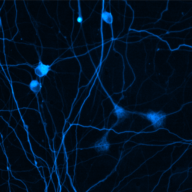A Cell Line for Probing Mammalian Autophagy
TECHNOLOGY NUMBER: 7751

OVERVIEW
Human reporter cell line with a non-invasive imaging assay to measure autophagic flux in living cells- Optimized and validated for high-throughput screening of compound libraries
- Therapeutic potential for neurodegenerative disorders, heart disease, and liver disease
BACKGROUND
Autophagy is the process by which healthy cells safety degrade unwanted proteins. Misregulation of autophagy has been linked to neurodegenerative conditions, cancer, infectious diseases and cardiac disorders. Autophagy has been demonstrated to be broadly neuroprotective in two relatively common neurodegenerative diseases, amyotrophic lateral sclerosis (ALS) and frontotemporal dementia (FTD). Stimulating autophagy extends neuronal survival and ameliorates symptoms of disease in cellular and animal models of ALS and FTD, making this pathway a highly promising therapeutic target for those and other neurodegenerative disorders involving protein misfolding and accumulation. Development of effective autophagy modulating drugs to treat neurodegenerative diseases such as ALS has been hampered by fundamental deficiencies in available methods for measuring autophagic activity, or flux, so a need exists for a non-invasive imaging assay to mitigate this limiation.
INNOVATION
Researchers have created a photoconvertible protein name Dendra2 that can be introduced into the endogenous MAP1LC3B locus of human cell lines via CRISPR/Cas9 genome editing, enabling accurate and sensitive determinations of autophagy activity via optical pulse labeling. High-content screening of 6,000 tool compounds and FDA-approved drugs using this assay showed that many reported autophagy stimulators either fail to enhance autophagy, or conversely inhibit autophagy flux, reaffirming the importance of measuring pathway dynamics rather than the steady state abundance of intermediates. Within an expanded library of 24,000 compounds sampling a wide diversity of chemical space, novel active compounds can be identified with profound effects on autophagy, validated by comparison with alternative methods. Because protein misfolding and accumulation are conserved characteristics found in nearly all neurodegenerative disorders as well as age-related conditions such as heart disease and liver disease, the compounds identified by this assay may have extensive and wide-ranging therapeutic potential.
PATENT APPLICATION
Number: 16/288,802